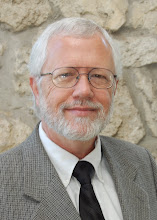First, the good. The unadorned design has fast-loading links. And you can hardly ask for more variety: Christian mysticism, Bible-themed museums, Hinduism-related
 toys, Tibetan singing bowls, Celtic flutes, a Virtual I Ching, Feng Shui tips, prophecies from Nostradamus and a host of others.
toys, Tibetan singing bowls, Celtic flutes, a Virtual I Ching, Feng Shui tips, prophecies from Nostradamus and a host of others.There's also meaty material like ancient Chinese texts, and historic Christian leaders like Francis Asbury. You can learn Carl Jung's beliefs on how personality affects spirituality. You can check out an intriguing mix of Judaic art and philosophy called Decoupage for the Soul.
The bad? Well, for one, many of the links are broken. Worse, some are misclassified. A site on yoga is grouped under Taoism. Soka Gakkai, a form of Japanese Buddhism, is under Shintoism. Sufism, a branch of Sunni Islam, is listed separately from that faith. And there's a link under Christianity to A Course in Miracles -- a metaphysical book supposedly dictated by Jesus.
The site's unnamed founders clearly take an interest in the stew of therapy, mysticism and esoterica that is often called the New Age. There's a subhead by that name here. But there are also several others -- Enlightenment, Mind-Body, Meditation, Shamanism, Spiritualism, Psychism, the Paranormal, Out-of-Body Experiences -- that are synonyms or subgroups.
Is that good or bad? Welllllll, I guess it depends on your own tastes.
















